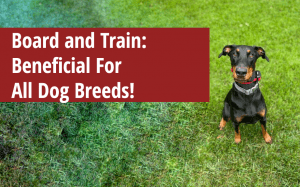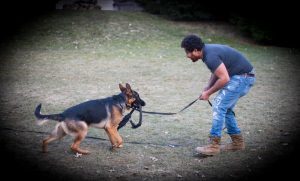Dog training is crucial for a well-behaved and happy pet. But do dogs actually like to be trained? Understanding your dog’s feelings towards training can make the process more enjoyable for both of you. In this blog post, we’ll explore how to tell if your dog enjoys training, make unavoidable situations pleasant, and highlight the benefits of professional dog training at Spitze K-9. Let’s dive into how to make training a positive experience for your furry friend.
How to Tell If a Dog Enjoys a Task
Observing Body Language
Observing their body language is one of the best ways to determine if your dog enjoys a task. Look for signs like wagging tails, relaxed ears, and an overall enthusiastic demeanor. If your dog approaches you excitedly when it’s time to train, it’s a good indication that they enjoy it. On the other hand, if they seem hesitant or avoidant, it may be time to rethink your approach.
Measuring Enthusiasm
Enthusiasm during training sessions is another key indicator. A dog eager to learn and participate will often display behaviors like jumping, barking happily, or even fetching the training tools themselves. This level of enthusiasm shows that your dog is engaged and looking forward to the activity. Each dog has its way of showing excitement, so pay attention to what makes your dog uniquely enthusiastic.
Understanding Individual Preferences
It’s important to remember that every dog is different. Some dogs may love agility training, while others prefer simple obedience commands. Understanding your dog and his or her interests can impact their enjoyment of training. Try different activities and note which ones your dog responds to most positively. Some dogs are harder to train, while some dogs are going to be easier to train.
Tips for Enjoyable Training

To make training more enjoyable:
- Try incorporating play and treats.
- Use positive reinforcement techniques, like rewarding good behavior with affection or high-value treats.
- Keep your dog training sessions fun and short to prevent your dog from becoming frustrated or bored.
- Remember, the main goal is to create a positive association with training tasks.
Benefits of Professional Dog Training at Spitze K9
Expertise and Experience
Professional dog training at Spitze K-9 offers numerous benefits for you and your dog. The expertise and experience of professional trainers can ensure that your dog receives high-quality training tailored to its specific needs. Trainers at Spitze K-9 are skilled in various training methods, making them capable of effectively addressing different behavioral issues.
Structured Training Programs
Spitze K-9 provides structured training programs that cover a range of skills, from basic obedience to advanced commands. These programs are designed to be engaging and enjoyable for your dog, ensuring they remain motivated throughout the training process. Structured programs also help maintain consistency, which is crucial for effective training.


Socialization Opportunities
One of the added benefits of professional training is allowing your dog to socialize with other dogs. Socialization is a critical aspect of your dog’s development and can significantly impact their behavior. At Spitze K-9, your dog will have the apportunity to interact with other dogs in a controlled environment, helping them become well-rounded and confident.


Contact Spitze K9 Today for Expert Dog Training
Understanding whether dogs like to be trained involves observing their body language, measuring their enthusiasm, and recognizing individual preferences. By making unavoidable training situations more pleasant and providing choices, you can enhance your dog’s training experience.
Professional dog training at Spitze K-9 offers expertise, structured programs, and socialization opportunities, making it an excellent option for dog owners.
Consider working with Spitze K-9 for your dog’s training needs and ensure a positive, effective training experience for your furry friend.





